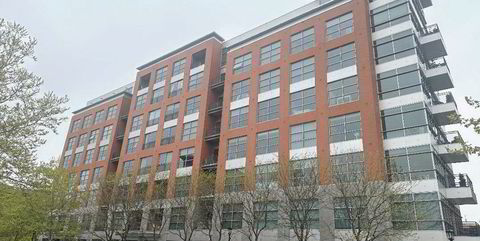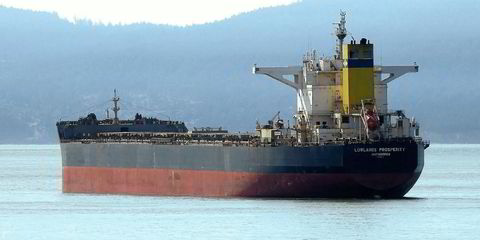Improving prospects for the largest crude carriers will see their rates outstrip other dirty tankers in the second half of the year, says shipbroker BRS.
VLCCs, the traditional biggest earners in the crude tanker segment, have consistently underperformed smaller vessels since 2021 but are set to bounce back when Opec+ countries boost their exports, it said.
It is the latest optimistic prediction for the sector after Clarksons Securities forecast that rates would climb significantly this year, driven by strong refinery margins, high oil prices and continuing unrest in the Middle East.
Without further market shocks, BRS forecasts VLCCs to eventually outperform other crude tanker sizes later in this year.
“Since the beginning of the year, we have placed this development at the second half of 2024 with an acceleration into 2025,” it said.
The earnings discount of VLCCs compared with aframax tankers so far in 2024 has narrowed to just 17% of the average for last year. It has regained a narrow lead over suezmax spot earnings for the first time since 2021.
Baltic Exchange data showed all sizes of dirty tankers earning similar time charter equivalent rates this week, with the three classes separated by less than $3,000.
TCEs for aframaxes stood at $41,459 on Monday, while suezmaxes clocked in at $39,729 and VLCCs at $38,498.
BRS attributes the repricing to continued muted fleet growth for the largest carriers and improvements in earnings owing to the rerouting because of conflict in the Red Sea.
Fully loaded VLCCs cannot transit the Suez Canal and have benefited from the longer routes around the Cape of Good Hope.
BRS said VLCCs had increased their share of global crude exports by more than 4% compared with last year to grab more than half of the total.
VLCCs have also been used for the first time for imports to West Africa as the new Dangote refinery in Nigeria ramps up operations.
Potential harsher sanctions on Iran — which has been hitting near-record seaborne exports of 1.5m barrels per day — could also increase the amount of oil carried by mainstream VLCCs.
The bulk of Iranian oil goes to China on so-called shadow fleet tankers and increased US assertiveness against Tehran following its missile attack against Israel could mean a switch in buying patterns to crude from other parts of the Middle East.
VLCC pool specialist Tankers International predicted improvements for the sector earlier this month, driven by the long distance between producers and markets.
While extra barrels in 2024 are expected to come from the US, Guyana and Brazil, demand will come from Asian countries, according to the International Energy Agency.
Read more
- ‘This year could be different’: Clarksons Securities hikes VLCC rate forecasts
- Editor’s selection: Middle East at melting point and VLCC investor appetite cooling
- Shipping demands UN bolster military protection after Iran ship snatch
- Heidmar enters technical management through Hong Kong VLCC outfit
- Shipowner George Procopiou taps VLCC resale market for first time in almost a decade







